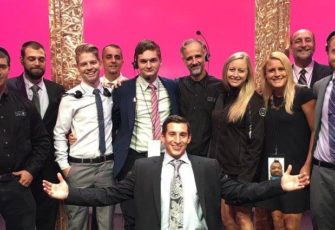Knowing versus understanding your audience can dramatically improve your next event – and here’s why…

“If your audience isn’t listening, remember that it’s not their fault, it’s yours.” Seth Godin
In a consumer-driven media age, in which charging for digital content is a large part of the business model, publishers can’t just know their audience, they must understand them. The same holds true in the live events space. Discovering the difference between knowing and understanding can be difficult since both are abstract processes of the mind and the brain.
In simple terms…
Knowing generally relates to facts and information about certain things of which you are certain about. Understanding is defined as a ‘psychological process’ related to a person, object, or situation which require you to think and use concepts to deal with. Also called intellection, understanding involves conceptualization and association.
For example, look at how understanding different generations may dramatically affect the learning styles you make part of your next event.
Understanding All Generation Types
Traditionalists (1930-1945)
Generally are trusting of authority figures and have a strong work ethic. They like to share their experiences and enjoy participation. When learning about technology, they require hands-on instruction.
Baby Boomers (1946-1964)
Prefer more traditional, instructor-led training, and are generally willing to engage in learning activities. They are the most highly-educated of all the groups and very interested in advancing their careers.
Generation X (1965-1976)
More likely to embrace independent e-learning and technology-based training but still feels most comfortable with the involvement of an instructor to some degree. They can be cynical and are usually very self-reliant.
Generation Y and the Millennials (1977-1999)
Accustomed to instant gratification and prefer fluid learning and self-guided discovery. They are confident using desktop technology and participate in social media to collaborate and share information.
As you can see, grasping the difference between understanding and knowing can lead you to better awareness of who your audience is, what they want and need, and how best to engage them. It can also lead to an event journey that transforms on a much deeper intellectual and emotional level.

Understand The Audience
When it comes to presentations, understanding the audience is a major part of the presentation development process. Sure, you want to learn about their major demographics, such as general age, gender, education, and culture. But learning about their values, attitudes, and beliefs will allow you to figuratively step inside their minds to understand the world from their perspectives. Through this process, you can find common ground, which will allow you to align your message with what the audience needs to know or believe.
Smarter Technology Match
With deeper audience understanding comes a smarter technology match. For example, some people still have a death grip on paper. For these type of attendees, a basic app with an agenda, maps, and a checklist will suffice. If it’s an audience who lives and dies by their mobile device, then your app should include more dynamic features like attendee interaction capabilities.
Consider Alternative Formats
For example, if you’re relaying complex topics to a group who are more academic in nature, you may want to consider a deconstructed conference session. Therefore, they receive homework ahead of time and come prepared to encounter more of a workshop-style curriculum.
The Small Details
A deeper audience understanding can also help you nail down the small details. These details can range from how the venue and culinary team make use of your brand colors, to music singers, to the disposition of the event staff.



